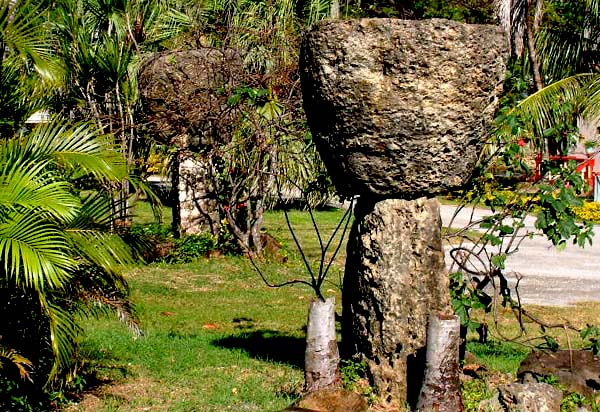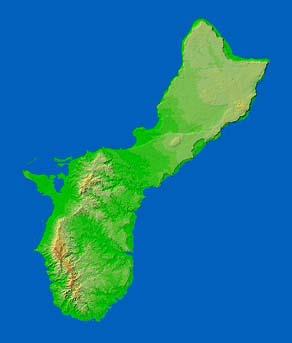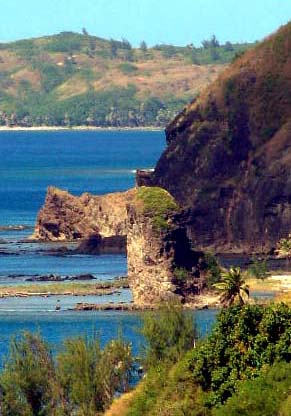 |
 |
 |
 |
||||
|
|
|
|
|
|
|
|
|
|
|
|||||||
|
|
|
|
Latte stones near St. Joseph's church.
|
|
“Guam’s creation story centers on two supernatural spirits, Puntan and Fu‘una. Now Puntan is a boy, a male, and Fu‘una is the female,” Anne tells us. “They are brother and sister. In the account these brother and sister spirits decide one day to create something. So Puntan offers to sacrifice his body, and tells his sister, ‘We’ve had our fun, let’s do something. Take my body apart and use the different parts of my body, but you use your spirit to give it all life.’"
|
||
|
|
||
|
"So he sacrifices his body and she takes it apart and uses his whole body. One eye becomes the sun, one eye becomes the moon. His eyebrows become the rainbows, the main part of his body becomes the earth. "Then after she creates from him, she sacrifices herself to bring it all to life, and then throws her spirit into the ocean at Umatac. There’s a rock there called Fu’una Rock, and some people call it Creation Rock, Creation Point. When you’re up on Fort Soledad and you look down, you can see this cylindrical rock. Fu’una throws her spirit into that rock, and then the first people come out of that rock." The island of Guam is the body of Puntan. It is said that if you go up to the northern part of the island and stand on the top of Mt. Santa Rosa, you can see the shape of Puntan's body. Fu'una's rock, called Laso de Fua, projects out from just above Umatac.
|
The body of Puntan.
|
|
|
"There's some disagreement as to exactly which rock it is," Larry adds. "Some people think it was a rock that the Spanish removed, in Agat, and that it was the source of all humans on Earth. Recent research shows that this rock for Fu'ua was in the Agat area, and the Spanish actually tore down this rock, and then built a church there, which lasted three weeks, and was burned down. The Lopez maps from the late 1600s show that Fu'ua is located in the area called Afllele or Aflleje beach today, or more commonly Rizal Beach. "But most people on Guam, and most of the written material, says that that rock was at Fouha Bay. One scholar says that's the male, its a phallic-symbol rock, and that the female symbol was in Agat. "Either way, there was reverence for this rock: people went to that rock every year, and they had rice blessed, and they could take that rice back to their village, and cure people. This story is important because it records that for the ancient Chamorros it was not God the father, nor God the mother, but gods the brother and sister. This is just one of many demonstrations of gender equity among the ancient Chamorros and the importance of the relationships among siblings."
|
|
|
|
|
"I like the story because for one, it shows Chamorro religious beliefs," Anne remarks. "The Spanish of course are not going to call Chamorros’ beliefs ‘religion’ and in fact, the Spanish accounts all say they don’t have religion because of course to them, if you’re not Christian you don’t have a religion. You could be Muslim, you could be Buddhist, you still don’t have a religion. So our children, they learn that the ancient Chamorros didn’t have a religion, they had ‘superstitions.’ They say, ‘Genesis, Adam and Eve. That’s the truth. This Puntan and Fu’una, that’s superstition, that’s myth.’ "But when I teach this, the kids react with, ‘No kidding! Wait a minute! We’ve grown up believing that we had no religion!’ Because the Spanish records are very clear: Chamorros had no religion. They had no gods. They only had the devil."
|
||
|
|
||
|
The influence of the Spanish can be seen in one of the stories that provides the legendary setting for Inarajan today.
|
||
|
|
||
|
|
|
|
|
|

|
| Inarajan Home | Map Library | Site Map | Pacific Worlds Home |
|
|
|
|
|
|
|





